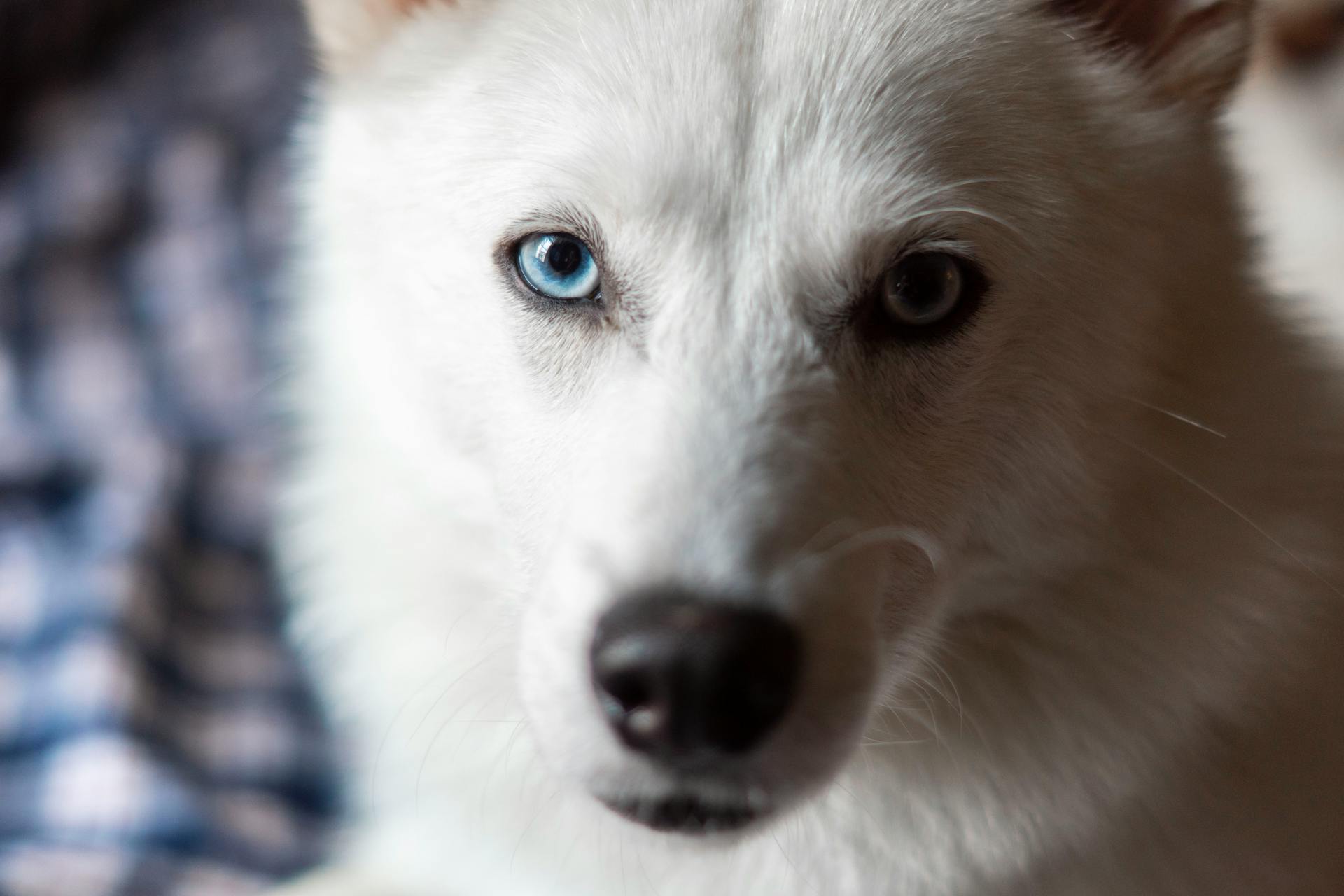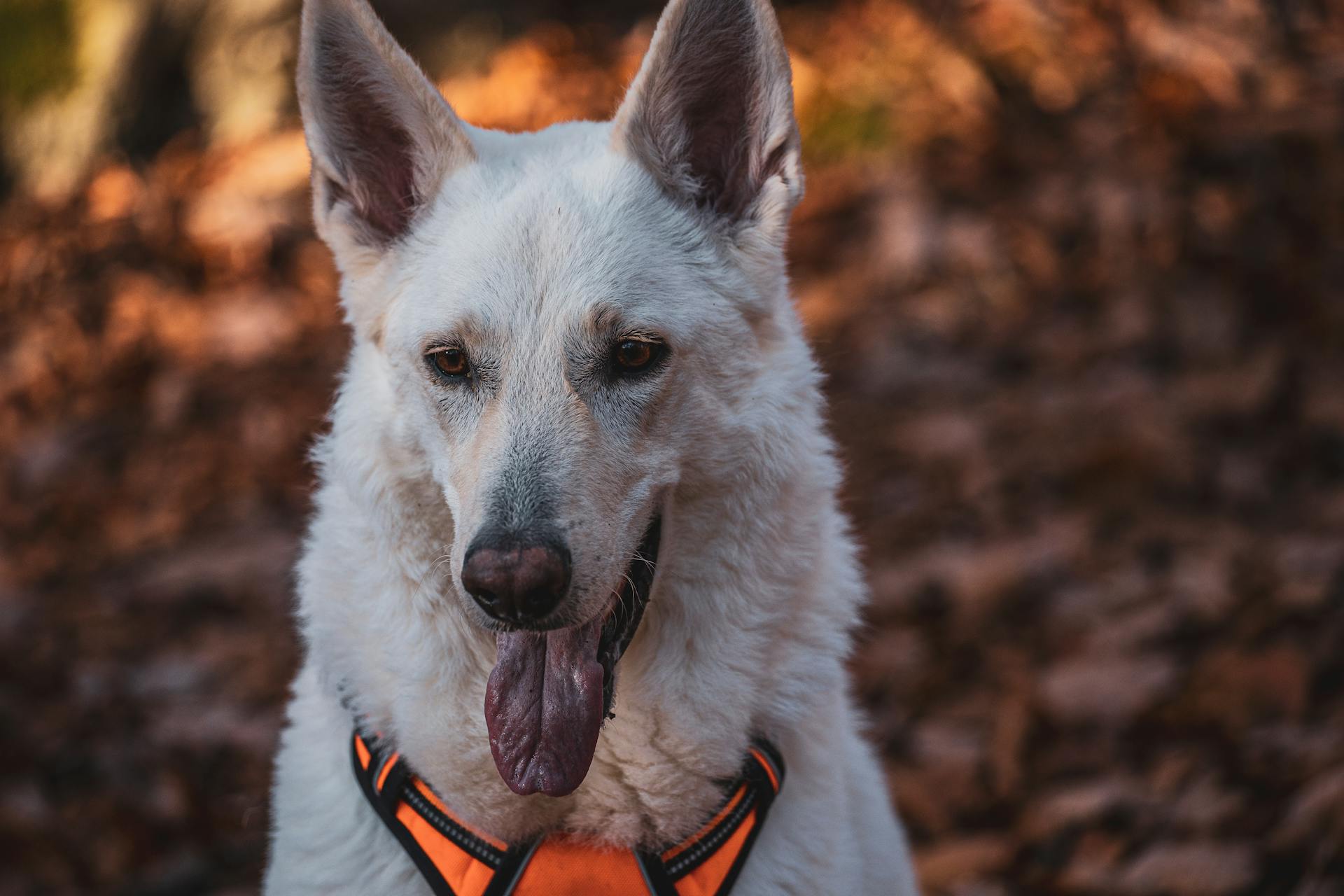
Red Miniature American Shepherds are a unique and captivating breed. They're a variation of the Miniature American Shepherd, which originated in the United States in the 1960s.
These dogs are known for their distinctive red coat color, which can range from a deep reddish-brown to a lighter golden red. They're a medium-sized breed, typically weighing between 20-40 pounds and standing between 14-18 inches tall at the shoulder.
Their intelligence and high energy levels make them an excellent choice for active families or individuals who enjoy outdoor activities.
The Basics
The Miniature American Shepherd is a small-to-medium-sized breed that originated in California during the 1960s as a smaller version of the Australian Shepherd. They are very active, intelligent, and despite their small size, are still excellent herding dogs.
This breed comes in a variety of colors, including black, blue merle, and red. They are closely related to the Australian Shepherd and share a common ancestor that likely originated in France or Spain.
A Miniature American Shepherd's temperament is marked by high intelligence and a friendly, playful personality. They are highly trainable and can adapt to learn a wide range of tasks.
In terms of exercise needs, Miniature American Shepherds require a lot of activity to stay happy and healthy. They love to play fetch, go for walks, and engage in mind-stimulating games.
Here's a breakdown of the breed's key characteristics:
Overall, Miniature American Shepherds make loyal and loving companions for active families or individuals.
Mini History
The Miniature American Shepherd breed has a fascinating history that dates back to the 1960s in California. It's closely tied to its larger cousin, the Australian Shepherd.
California ranchers admired the smaller dogs and referred to them as Aussies. They became popular on the rodeo circuit for their stamina and herding skills.
By the mid-1970s, a consistent version of the mini Aussie emerged. The name was later changed as people pursued a separate breed recognition.
The breed was developed by stockmen who valued its herding abilities and practical traits. It's interesting to note that the breed isn't recognized in Australia, despite its name.
Doris Cordova initiated breeding smaller Australian Shepherds in 1968, envisioning a compact version with the same traits but suitable for households.
Care and Maintenance
The miniature American shepherd needs a lot of exercise every day. Regular physical activity will keep them happy and healthy.
Their coat is fairly wash-and-wear, requiring only occasional brushing to remove loose fur and prevent tangles. Brush them at least weekly to keep their coat looking its best.
Bathe your red miniature American shepherd roughly every month, depending on how dirty they get. It's also essential to check their nails for trimming and their ears for wax buildup and irritation.
Care
To give your miniature American shepherd the care they need, start by providing plenty of exercise every day. This breed requires a lot of physical activity to stay happy and healthy.
Their grooming needs are relatively straightforward, with a coat that's easy to maintain. Brush your dog at least weekly to remove loose fur and prevent tangles.
You'll also need to bathe your dog roughly every month, depending on how dirty they get. This will help keep them clean and smelling fresh.

Don't forget to check your dog's nails and trim them as needed - usually every month. You should also look in their ears at least weekly for wax buildup, debris, and irritation.
Brushing your dog's teeth daily is also a must to keep them healthy. And be sure to check their eyes regularly, as they're susceptible to various problems.
Return
Returning your product after purchase is a straightforward process. The company offers a 30-day return policy, during which you can initiate the return process by contacting their customer service team.
You'll need to provide the order number and a reason for the return. This information will be used to process your refund or exchange.
The return shipping costs are the buyer's responsibility. However, the company will cover the cost of return shipping if the product is defective or not as described.
Once the returned product is received, a refund or exchange will be processed within 5-7 business days.
Health and Wellness
As a responsible Red Miniature American Shepherd owner, it's essential to prioritize your dog's health and wellness.
Red Miniature American Shepherds are generally a healthy breed, but they can be prone to some hereditary health issues, including eye problems such as progressive retinal atrophy, collie eye anomaly, cataracts, and iris coloboma.
To prevent or manage these conditions, regular veterinary check-ups are crucial. Be sure to discuss any concerns with your vet.
A balanced diet and plenty of fresh water are also vital for your Red Miniature American Shepherd's overall health. Feed two measured meals per day, but consult with your vet about the type and quantity of food.
Here are some common health issues to watch out for:
- Eye issues: progressive retinal atrophy, collie eye anomaly, cataracts, and iris coloboma
- Drug sensitivity: due to a mutation of the MDR1 gene
- Hip dysplasia: an orthopedic problem that affects the hips
- Luxating patella: a problem that causes the knee cap to slip out of place
If your Red Miniature American Shepherd leads an active lifestyle, they may need more calories. However, be mindful of treats and extra food, as weight gain can be a significant issue for small dogs.
Diet and Nutrition
Fresh water should always be available for your dog. It's essential for their overall health and well-being.
Feeding a nutritionally balanced canine diet is crucial. Discuss the type and quantity of food with your vet to ensure it meets your dog's needs.
Dogs with very active lifestyles may need more calories to maintain their energy levels. However, it's essential to monitor their weight gain to prevent obesity.
Treats and extra food can add up quickly, so be mindful of what you're giving your dog. A pound of weight gain can be significant for small dogs.
If your dog eats too quickly, a slow feeder bowl can be a useful solution. This can help prevent gobbling and reduce the risk of choking.
Supplements can be beneficial for dogs with specific health problems. For example, omega-3 fish oil may be recommended by your vet for conditions like hip dysplasia or luxating patella.
For your interest: Breeds of Red Dogs
Common Health Problems
Mini American shepherds are a generally healthy breed, but like all breeds, they can be prone to certain health issues.

One of the most significant health concerns for Mini American shepherds is eye problems. This can include progressive retinal atrophy, which can lead to blindness, or collie eye anomaly, which affects eye development and vision.
These eye conditions can be caused by genetics, and responsible breeding practices can help minimize the risk.
Eye issues are not the only health concern for Mini American shepherds. They can also be susceptible to drug sensitivity due to a mutation of the MDR1 gene.
This means that certain medications can be toxic to them, and owners need to be careful about what they give their dogs.
Hip dysplasia is another common health issue in Mini American shepherds. This orthopedic problem affects the hips, impairing their function and stability.
Dogs with hip dysplasia can experience pain and mobility issues, which can significantly impact their quality of life.
Luxating patella is another problem that can affect Mini American shepherds. This causes the knee cap to slip out of place, resulting in pain and limping.
Owners should be aware of these potential health issues and work with their veterinarian to prevent or manage them.
A different take: Are Miniature Schnauzers Good Dogs

Here's a summary of the common health problems that can affect Mini American shepherds:
- Eye issues: progressive retinal atrophy, collie eye anomaly, cataracts, and iris coloboma
- Drug sensitivity: due to a mutation of the MDR1 gene
- Hip dysplasia: an orthopedic problem affecting the hips
- Luxating patella: a problem causing the knee cap to slip out of place
Frequently Asked Questions
How big do miniature American shepherds get?
Miniature American Shepherds typically grow between 13-18 inches tall and weigh between 20-40 pounds, with males slightly larger than females. Their compact size makes them a great fit for families and homes with limited space.
Do mini American shepherds bark a lot?
Miniature American Shepherds can bark, but early socialization and training can help minimize excessive barking. Proper training and socialization are key to preventing unwanted barking in this breed.
Do miniature American Shepherds shed a lot?
Miniature American Shepherds shed moderately, producing pet dander that can trigger allergies. Regular grooming can help manage shedding and reduce dander.
Sources
- https://www.thesprucepets.com/miniature-american-shepherd-dog-breed-profile-4782825
- https://www.wisconsindesignerdoodles.com/miniature-american-shepherd
- https://www.istockphoto.com/photos/miniature-american-shepherd
- https://www.dogbreedslist.info/all-dog-breeds/miniature-american-shepherd.html
- https://biologydictionary.net/miniature-american-shepherd/
Featured Images: pexels.com


